Machu Picchu is truly one of the wonders of the world. The spectacular ridge-top site of this settlement and the fine masonry of royal Inca buildings are stunning aesthetic and technical accomplishments. This exquisite stonework is matched in other important Inca structures in the city of Cusco and at nearby archaeological sites, including Ollantaytambo, Pisac, Kenko, and others, making Peru an extraordinary destination for travelers worldwide. Although researchers are confident that they clearly understand many ancient Andean construction techniques, some aspects are difficult to explain and remain uncertain. Ever since I had the good fortune to visit Machu Picchu, the mysteries that envelop Incan construction practices have intrigued me. As with any good story, the clues are unfolding gradually.
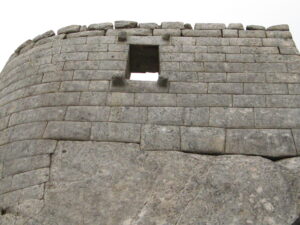
Curved wall above bedrock outcrop at Machu Picchu
Inca Construction Tools and Techniques
On virtually all fine Inca masonry, pecks or pit scars–the percussion marks made from heavy rock hammers — are found with small scars near the edges and larger scars away from the edges of blocks. Archaeologists recognize this as a reflection of the different hammer sizes used to trim the blocks, with larger hammers used to chip the central block areas and smaller ones used near the edges, where careful trimming was required to achieve the close fits with adjacent blocks.
Many lines of evidence point to the use of hammerstones to shape stone blocks–early Spanish chroniclers wrote about this technique after watching Inca builders, and vast numbers of stone hammers have been found scattered in ancient quarries and in building sites, including where they were apparently forgotten within walls at Machu Picchu. Modern research that includes experimental archaeology by Jean-Pierre Protzen, an architectural historian and professor at the University of California at Berkeley, has convinced most researchers that the Incas accomplished their stonework with only stone tools for hammering, sand for polishing, and enormous patience. (More information about quarries and construction techniques is in my post Monuments, Megaliths and Inca Builders.)
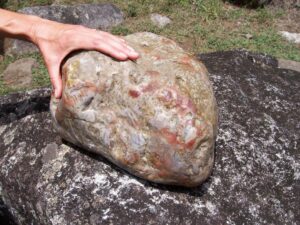
Hammerstone at Machu Picchu (Torres)
In the finest Inca masonry, stone blocks often have convex, pillow-like faces and sunken joints. A 1913 archival book about travel in Peru has a photo, below, taken in Cusco and accompanied by text that states: “Along the steep streets of this portion of the city extensive remains of the foundations and walls of these palaces still remain, their giant stones and perfect masonry provoking the constant wonder of the traveller. Pictures of them give but a poor impression, for the heavy rustic finish of the face of each stone hides the perfection of the joints, which are so finely fitted that, devoid of mortar as they are, the blade of a small pocket-knife can scarcely be inserted into any one of them.”
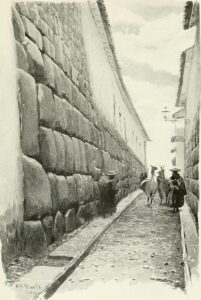
Incan wall in Cusco (Peixotto, 1913)
The tight fits that Inca builders achieved between the blocks is an impressive achievement. And there are mysteries. In some places, these joints can have a slightly different color and even a glassy, or vitrified, appearance compared to the surrounding rock. On other blocks, a similar smooth glassy glaze is apparent over larger rock faces. This isn’t a natural weathering phenomenon, so what could explain these curious features?
Reddish and Glittery Mud
A European chemist presents a convincing explanation for some construction uncertainties in a research paper that I found recently. Published in 2017 by a European chemist, Helmut Tributsch, the title captures the essence of his work: “On the reddish, glittery mud the Inca used for perfecting their stone masonry”. Tributsch describes several lines of evidence to support his hypothesis–a refreshing contrast to wild and unsubstantiated speculations about construction techniques floated out ever since Spanish conquistadors admired Incan works. Below, I summarize the interesting content of this paper, but for detailed explanations and some great photos, see Tributsch’s article.
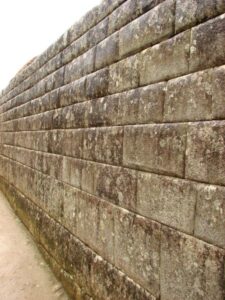
Incan wall at Machu Picchu (Rubyk)
The story begins in the writings of two Spanish chroniclers: Garcilaso de la Vega (1609) and Pedro de Cieza de Leon (1553). Both were interested in Inca architecture and building techniques and are considered reliable chroniclers; both reported that the Inca builders used hammerstones to shape stone blocks. Additionally, de la Vega wrote: “…mortar was used and it was made of a reddish clay…” and “molten lead and silver and gold were poured in for mortar”. De Leon wrote “they used instead of mortar also molten gold”. No traces of this mortar remain, but what is the basis for reports about this “molten gold”?
One plausible explanation is pyrite, an iron sulfide, also known as “fool’s gold” because it has a metallic appearance with a yellowish hue. Flakes of pyrite can easily be mistaken for gold, and pyrite is found throughout in the Andes in many types of rock.
And then, the plot thickens! Decomposing pyrite, in combination with water, produces sulfuric acid–and in concentrated form this acid is highly corrosive towards other materials, including rocks. An additional hint–the Quechua name for the reddish mortar includes a word describing something one would not like to touch, as it interacts with the skin. Acid fits this description. Did the Incas have access to strong acids?
Incan miners focused on gold, silver, copper, tin, lead and zinc. These metals are frequently found in sulfide deposits — notably silver, which occurs in natural alloys with copper, gold, lead and zinc. Acid mine water from the sulfides was surely known to the miners. The bacterial oxidation of pyrite that generates sulphuric acid can reach pH = 0.5. This extremely high acidity can weather silica-containing rocks to the clay mineral kaolin by superficially dissolving and softening the rock material to a silica gel.
The story continues. Geologists recognize a mechanism known as pressure solution that occurs preferentially at contact surfaces of mineral grains under the heavy weight of compaction. Mineral grains are reorganized and some move to areas with less pressure, pore spaces are reduced, and the rock becomes welded together more tightly.
In heavy rock masonry, the pressure solution mechanism would be enhanced when combined with the acidic environment created by applying a pyrite mortar. The silica gel generated could precipitate in cracks and voids in adjacent areas of the blocks. Specifically, by applying a pyrite-rich mud onto the interfaces between blocks as they were being assembled, or on the joints between blocks already in place, a silica gel would form to smooth the rock joints. This gel would then harden, leaving no traces of the application.
As for the “molten” appearance of the mortar reported by the Spaniards, finely ground pyrite is reactive with water and capable of producing heat and even starting fires, a problem recognized by miners. Mortar applications could have released steam, giving spectators the impression that heat was involved. In some situations, and with higher temperatures, hot sulphuric acid could have been produced. This would increase the amount of silica gel formation and also slightly change the color of the rock where the acidic mortar was applied.
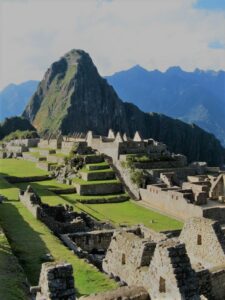
Did the Incas Really Use This Technique?
Experimental archaeological research is needed to provide confidence that a pyrite-based mortar was, in fact, actually used by the Incas. Corroboration, and reproducible results, are cornerstones of scientific methods! Hopefully, other researchers will carry out further investigations.
One more important piece of data remains: Tributsch describes how similar silica gel-based technology has been developed for use in modern conservation efforts to slow the environmental deterioration of stone monuments. This helps to convince me that the Incas did indeed use a glittery reddish mortar as a tool in their efforts to achieve such perfect stonework. Fascinating!
Please share this post! Also, please scroll down to the bottom of this page and leave your email address on my website. You’ll receive messages only when I publish a new post (about once a week) and my occasional newsletter. Join now to learn more about geology, geography, culture, and history.
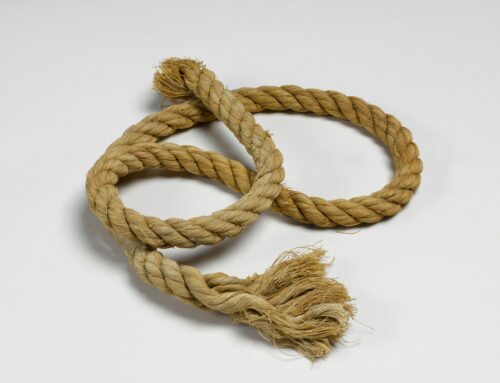
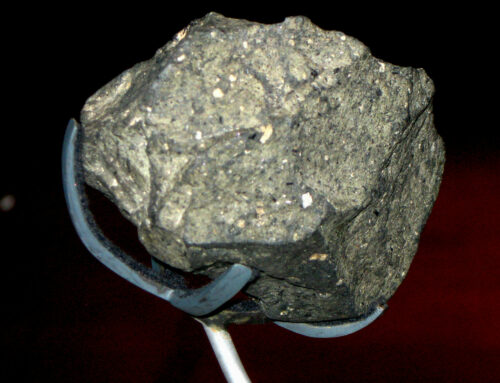
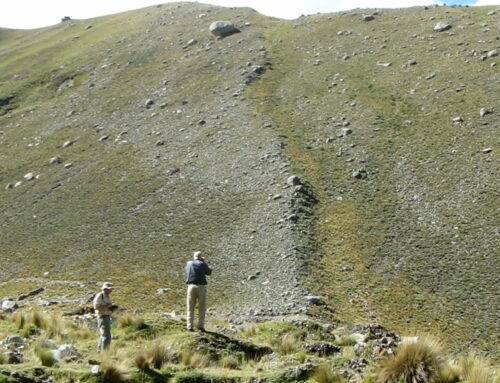

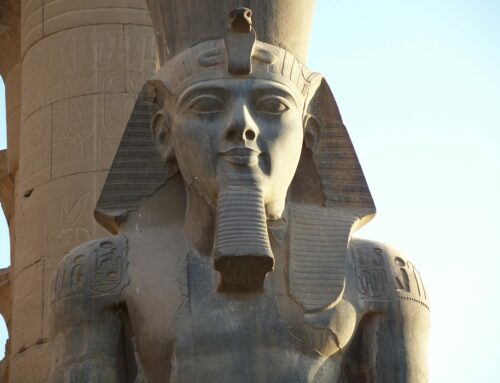
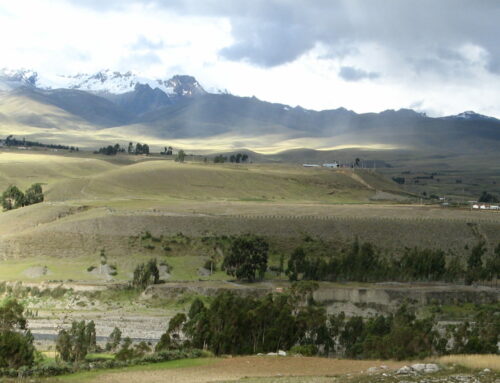
Another fascinating story.
Thank you!
Thank you for going into the careful work done by Dr. Helmut Tributsch. I saw a documentary on this and was hoping on finding something written that I could understand.
Could something similar have been used on the sandstone and volcanic rocks in India, and how about the limestone in Egypt?
Thanks, Kimberly. Good questions about rocks in India and Egypt! My guess is that since the pyrite reacts with silica, probably if this type of mortar was available, then it could have similar effects on sandstone and volcanic rocks, but not limestone. Just guesses! Maybe someone will look into this more carefully someday!
The reddish glittery mud may be only part of the story. The most effective acid with ability to break the Si-O bonds in the silicate minerals/rocks is hydrofluoric acid and this has widespread use in modern analytical laboratories for dissolving rocks for analyses. My contention is that the Incas also used fluorite (CaF) which when mixed with the hot pyrite muds would produce hydrofluoric acid. The mineral Fluorite which is common in some Inca copper, gold and silver mines. Elevated fluoride contents in some local herbs may also have contributed.
Also, Incas and pre-Inca people’s mined bird guano along the coast and used these high nitrogen and phosphorus deposits for fertilising crops. I suspect they were well aware of the uric and phosphorous acid in this material and the ability to produce nitric acid from the excrement may have been developed. This material may have also been mixed with the red mud to provide a multi acid digest.
Reported bitumen at some sites could have been used to coat areas on rocks which did not require dissolution. Workers may also have used bitumen to hold the acidic materials and protect their skin.
Thanks very much, Ian! This is valuable and fascinating information!